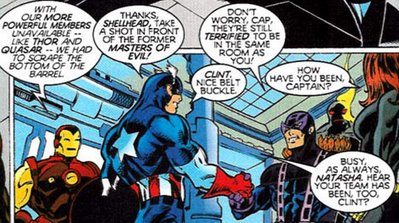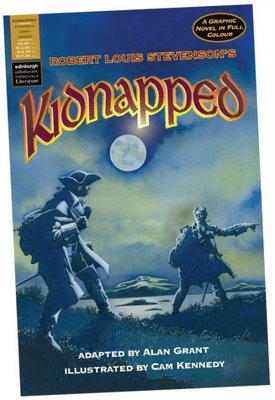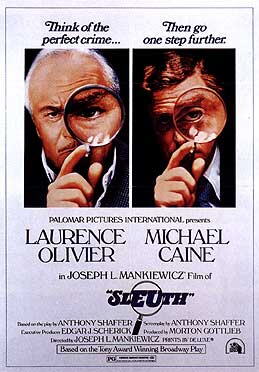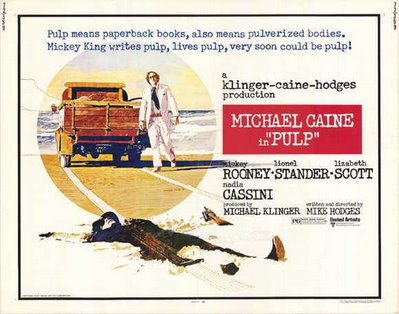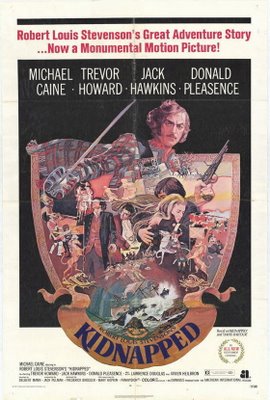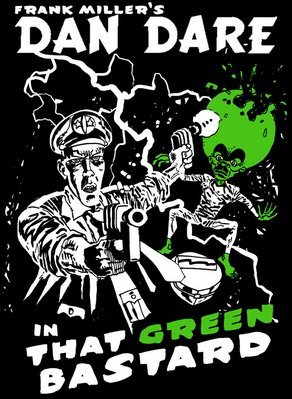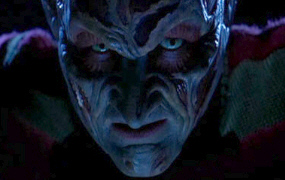
A couple of years back I wrote a novel based in the film franchise world of A Nightmare on Elm Street. Suffer the Children seemed to be well received and I decided to pitch another, bringing back some of the characters from my first effort and resolving what had happened to the heroine, a plucky teen called Alex. When last seen she was trapped in an asylum, blamed for a spate of gruesome murders committed by nightmare serial killer Freddy Krueger and - worst of all - apparently carrying Freddy's child. My first Elm Street novel had trodden some fairly well worn ground for the franchise, and I wanted to do something different for the second. One question had arisen while I was writting Suffer the Children - why was Freddy so obsessed with one particular house on Elm Street? I decided answering that question would be the central quest of my new proposal. I wrote it up, Black Flame's editorial team of the time liked the results and it got forwarded to New Line for approval.
Encouraging noises were being made but, alas, it seems sales on the New Line imprint were not enough. The various ranges - Elm Street, Final Destination, Friday the 13th - got wound down and my new book never got commissioned. So, just for fun, here's what I was planning to do in it. Obviously, the final novel might well have differed significantly from this. I suspect the influence of films like The Haunting and Legend of Hell House are all too blatant in this plot synopsis, so that would need to have been addressed. But I thought there were some nice twists and turns in the narrative. Anyways, for whatever it's worth, here's my lost Elm Steet proposal...
Title: HOUSE OF 100 MANIACS
He cursed him in sleeping, that every night,
He should dream of the devil, and wake in a fight…For decades Freddy Krueger, bastard son of a hundred maniacs, has tormented and slain the children of Springwood in their dreams. Now his doorway to our world, 1428 Elm Street, is due for demolition – but few believe this will lift the killer’s curse from their town.
A team of investigators agrees to spend one night inside the house to discover why Krueger has claimed it as his domain. The team includes a priest, a psychic, a scientist, a psychotherapist and the sole survivor of Freddy’s worst killing spree. A trio of teenagers sneaks into the house on a dare, determined to prove themselves.
But one night within these walls will seem like an eternity in hell!
Characters, Settings:
ALEX CORWIN: Twenty two-year-old survivor from Suffer the Children. She was blamed for the murders of eight people, murders for which Freddy Krueger was responsible. Declared clinically insane, Alex was committed for life to maximum security psychiatric care. Pregnant with Krueger’s child, Alex was effectively catatonic. But she regained her senses after the baby was delivered by Caesarean section, and has been undergoing psychotherapy. Five years on, Alex believes none of it was real – Freddy, the baby, the deaths of her friends. But truth will out.
VINCENT MORTIMER: Alex’s psychotherapist, he came to Springwood after a messy divorce. Vincent arrived at Westin Hills Psychiatric Hospital two years and has made remarkable progress with Alex. He is certain taking Alex back to her old home at 1428 Elm Street is the final step towards recovery. Vincent does not believe in the legend of Freddy Krueger, and certainly places no credence in the idea of a curse. He is a man of science and he is walking into deadly territory.
MIKE WILLIAMS: Former sheriff of Springwood, he was obliged to resign after Suffer the Children. His life has been plagued by Krueger. Now dying of cancer, Williams wants to see an end to Freddy’s poisonous influence on this town, to lift the curse of Krueger from the house at 1428 Elm St. He persuades the town elders to fund an intervention at the house, using his own life savings to help bring together the team of investigators in the hope of cleansing the property.
FATHER DERMOT KELLY: An Irish Catholic priest, fond of the bottle, gambling and numerous other vices. He is a man of god, but a weak man, a man who has lost his faith. He is brought in to perform an exorcism on 1428 Elm Street and finds himself face to face with the devil incarnate. Can he rediscover his belief in God before everyone inside the house is damned to spend eternity in hell?
BARBARA STEWART: A scientist who specialises in debunking notions like ESP and contact with the afterlife. Barbara would be beautiful if she didn’t hide behind her glasses and her lab coat, preferring people to notice her talent instead of her looks. Insecure about herself, she is ill prepared for the reality of what lies buried within the soul of the building on 1428 Elm Street, the true horror of that house.
MORGANE ASH: A self-proclaimed medium and psychic, Morgane says she can commune with the dead and see into the future. She agrees to join the team investigating the Krueger cruse, despite a vision of her own death inside the house on Elm Street. What she discovers inside could tear her soul apart.
JENNY ANDERSON: An 18-year-old student at Springwood High who accepts a dare to spend a night inside 1428 Elm Street. The only girl among five siblings, she has had to fight for everything. Jenny claims she isn’t afraid of anyone, but for five years has been haunted by nightmares of a monster coming to get her – a monster with knives for fingers. Now her nightmares are about to come true.
TERRI SHARP: This 17-year-old is the opposite of her best friend Jenny. A spoiled only child, Terri can have anything she wants anytime she wants. Jenny stood up for Terri in the playground on their first day of grade school and the pair have been unlikely friends ever since. Terri is heading for an almighty fall.
GARY CHAMBERS: Terri’s trouble-making boyfriend is a 19-year-old high school drop-out who wants to have fun now and worry about the future later. He’s had brushes with the law but is braver and smarter than his bad boy image suggests.
FREDDY KRUEGER: The star of the show, he gets off on pain and fear, it makes him stronger. He has a special affinity for the house at 1428 Elm Street, the place where so many of his victims have lived, where so many of his greatest slay-rides have begun. His very essence has impregnated the property and the ground on which it stands, turning 1428 Elm Street into his domain, his territory. Woe betide anyone who dares challenge Freddy Krueger on his home ground…
Plot Synopsis:
CHAPTER ONE: A psychotherapy session between Vincent Mortimer and his patient Alex Corwin, using hypnosis to make her relive the events of ‘Suffer the Children’. Vincent believes she must confront the demons of her past otherwise she will never be free of them. Alex comes face to face with Freddy again. Thanks for the wake-up call, bitch! Alex escapes the nightmare, but she knows Krueger is waiting for her. She still has unfinished business with that bastard…
CHAPTER TWO: A disparate group assembles in Springwood - Catholic priest Father Kelly, noted medium Morgane Ash, scientist Barbara Stewart and psychotherapist Vincent Mortimer - all brought together by former sheriff Mike Williams. The town will pay each of them a considerable sum of money to spend 24 hours inside 1428 Elm Street, if they emerge with an answer to one question: why links Freddy Krueger to that property and how can he be purged from it? Williams is throwing in his own life savings to make this happen. For Williams, this is his last roll of the dice - lung cancer will claim him soon and, if he's going to hell, he wants a clearer conscience when he gets there. He doesn't want to spend eternity in the company of Freddy Krueger. Barbara and Morgane clash immediately, their belief systems are utterly opposed to one another. Father Kelly has little wish to be part of such freak show, but he needs the money after embezzling charitable funds from his parish.
CHAPTER THREE: For Alex, returning to Elm Street is the final step on her path to recovery. Vincent had almost convinced her the events of five years ago were a psychotic episode, nothing more - there is no Freddy Krueger, she must face the consequences of what she did. When they happens, she will be able to live the rest of her life free from nightmares and psychoses. She agrees to go back to her old home on Elm Street, but not because she believes Vincent anymore. She knows Freddy is waiting for her there, she must face him or remain cursed for life. Across town, high school student Jenny Anderson is playing truth or dare with her friends Terri Sharp and Gary Chambers. When Terri asks Jenny if she is still a virgin as her truth question, Jenny opts for the dare instead - sneak inside 1428 Elm Street and bring back a piece of murder memorabilia. Okay, she agrees, but only if you two come with me. Terri and Gary are both up for it.
CHAPTER FOUR: The adults arrive at the front of Alex's old home: it's boarded up, abandoned, awaiting demolition. She feels a shudder of pain and anguish, but Vincent assures her it will be alright. She has to believe in him, believe in the truth - there is no Freddy Krueger. Morgane faints after seeing a vision - they are all going to die inside that house, it's a death trap. For years she has had visions of her own death in just such a place. But she agrees to go inside: better to face your fears than be conquered by them. Father Kelly helps Barbara get her scientific equipment inside, and the others venture in through the front door too. Williams padlocks the front door. Nobody gets in or out for the next twenty-four hours, that was the agreement. I've had the water and electricity supply reconnected for the duration. After midday tomorrow the wrecking ball will be tearing through this place. Let's find some answers.
CHAPTER FIVE: Round the back of 1428 Jenny, Terri and Gary break in through a window and conceal themselves in the basement to avoid being seen by the adults. Williams blocks their exit, so now the trio of teenagers are stuck inside too. Jenny is startled to find a young boy in the basement, his name is Ricky. He can't remember how he came to be there or where his family is. He asks her to look after him, in case the scary man comes again. The scary man? His face was all burned and he had fingers for knives. Jenny is shaken - since puberty her nightmares have been stalked by the same man, clad in a battered fedora and a jersey with red and green horizontal stripes. How could Ricky know that? Could they have been sharing the same nightmares?
The adults soon find the teenagers, but Williams refuses to let anyone out until the deadline is up. Jenny tries calling out on her mobile but is getting no signal. The same is true of all the others. They are cut off, the nine of them. Ten, you mean, Terri says - don't forget Ricky. Ricky? Who's Ricky? The little boy is vanished, no trace can be found of him. The former sheriff says there's long been rumours of a ghost who sometimes appears to residents on Elm Street, the spirit of a boy murdered by Krueger whose body was never found. Perhaps his bones are still inside this house, perhaps that explains why Krueger comes back here.
CHAPTER SIX: Barbara sets up her equipment and begins to run tests on the house. She detects high levels of peculiar energy, the like of which she’s never seen before. If I didn’t know better, I’d say this house was impregnated with… pure hatred. Morgane says it is and holds a séance, calling to Krueger in the afterlife, asking what he wants of them. I want you to die, he snarls in reply, and I’m going to enjoy making it happen. None of you will leave my domain alive. Williams argues with Vincent about Alex. Vincent pleads with the former sheriff not to undo all the good work done in therapy. There’s one thing missing from the official files – whatever happened to Alex’s baby? It was adopted, is all Williams will say. I pray to god that child never finds out the identity of its parents…
CHAPTER SEVEN: Outside, the sun sets and darkness falls. This is when he comes, Morgane whispers. He lives in dreams and nightmares, they are his domain. As the people of Springwood fall asleep, so his strength begins to grow. If one of us should fall asleep within these walls, he will use their subconscious as a conduit to get to us all. The nine of them agree that nobody can fall asleep, for all their safety. But Gary dozes off, having spent all the previous night riding around on his motorcycle. Then the terror begins. Alex has visions of being sliced open from the inside by Freddy's fingerknives, the monster escaping from her womb before going on to kill. Gary's sliced and diced body is discovered and Williams accuses Alex of the killing - it's started, just like it did before.
CHAPTER EIGHT: When the others try to get out, they find they can't - the doors and windows are sealed shut by some inexplicable power. Barbara tries to come up with a reason, but Morgane tells her to accept that science is no match for the power buried inside this house. The supernatural is what we're dealing with now. Freddy begins another killing spree, claiming the inhabitants of 1428 one by one: Father Kelly tries to exorcise the dream demons from this place, but finds his communion wine has turned to human blood - he bleeds to death from stigmata, the others unable to staunch the wounds in the priest's hands, feet and side.
CHAPTER NINE: Alex begins to regress into a catatonic state, unable to cope with her carefully constructed belief system being torn apart - everything Vincent taught her to doubt is coming true again. Barbara and Vincent turn to each other for support and have sex in the master bedroom. But when Vincent goes for a piss he is cut to ribbons by the bathroom mirror exploding - how's that for having a slash? Morgane's tarot cards come to life when she falls asleep and is tortured by their symbols before dying in horrific pain and torment. Terri is next. She sees Ricky and runs after him, down into the basement, then down into the boiler room, down into Freddy's nightmarish domain. He creates a suitably grotesque end for her superficial lifestyle, withering her body to that of an old woman before making her bones shatter like brittle china cups.
CHAPTER TEN: By now there are only four survivors left: Barbara, the catatonic Alex, Williams and Jenny. The former sheriff says all those who got away from Krueger talked about him luring them down into a boiler room. It wasn't so much a place as a state of mind. If you want to find him, that's where the monster will be. His health is fading fast, he can't go with them. He'll stay here, keep watch over Alex. Barbara and Jenny venture down into the boiler room where Krueger is waiting for them. He taunts them with their worst fears, visions of horror and loathing. Upstairs in 1428, Williams meets the boy Ricky. Do you want to play a game, the child asks sweetly? It's called hide and seek. Williams agrees and goes off to hide, leaving Alex in her vegetative state. She drifts in and out of dreams, appearing and disappearing in the boiler room.
CHAPTER ELEVEN: Barbara and Jenny play cat and mouse with Krueger, who wounds each of them and then murders Barbara - slicing out her eyes: she blinded me with science! Ricky finds Williams, who says he isn't feeling well. I guess this isn't going to make you feel any better, the child replies, and stabs Williams through the stomach with miniature fingerknives. Alex wakes up to find Williams staggering into the room, bleeding to death. He collapses, gasping a last message: Ricky... Rick... Frederick... Freddy... Ricky was Krueger all along? How is that possible? In the boiler room, Jenny keeps one step ahead of Freddy. She finds Ricky and tries to protect him, not realising his true identity…
CHAPTER TWELVE: Alex remembers what happened five years ago: how Freddy gave her empathic powers, the baby he put in her body, the Caesarean section to remove it – but what happened to the baby? It grew up to become Ricky! In the boiler room Jenny is attacked by Ricky, who turns into Freddy, growing older and scarred before her eyes. As Krueger is about to finish her off, Alex appears – it’s time we finished this, you and me, once and for all.
CHAPTER THIRTEEN: Alex and Freddy do battle in the dreamscape, Alex using her empathic abilities to get inside Krueger’s mind, to witness his memories – Ricky is Freddy as a child. He lived here at 1428 Elm Street. His father used to beat him in the basement, used to burn him, cut him – little Frederick thought that was how fathers loved their children – it twisted his psyche forever – that’s why he always comes back to this house, why he calls Elm Street home…
Freddy snaps out of his memories, furious that Alex has seen into him – normally he prays on the worst fears and memories of others! Alex tells Jenny Krueger’s secret: he’s a scared little monster, he only a child – he can’t hurt them. Taking their power from each of those who died in the house – Morgane’s supernatural abilities, Gary’s courage, Vincent’s belief, Father Kelly’s faith – Jenny and Alex turn this on Krueger, regressing his to the child he was, trapping him in his own childhood memories. The boiler room is flooded with white light, then is gone.
EPILOGUE: Alex and Jenny wake up on the grass outside 1428 Elm Street. The wrecking crew is waiting to start work demolishing the house. It’s over, at last. The two women don’t notice the small boy playing on the other side of the road, wearing a t-shirt of red and green strips. He finds a worn leather glove with rusty knives protruding from each of the fingers and slips it on: a perfect fit. Come inside now, the boy’s mother calls out. Come inside, Ricky…
THE END.







